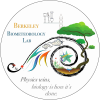Reports
Contents
| Title: | A547 board calibration - 2020 | ||||||
| Date: | 2020-12-08 | ||||||
| Data File: | A547test_20201208_calib.csv A547test_20201208.csv |
||||||
| Refers to: | 7157, A547-02 | ||||||
|
I tested a homemade A547 board sn A547-02 against a Campbell A547 board sn??. Both boards were tested with Campbell conductivity sensor CS547A sn 7157. The sensor was wired to the Lab CR1000, which scanned every 10 seconds and output 1-minute averages. Outputs were temperature-corrected conductivity, Ct (non-temperature corrected conductivity), and temperature. Â I used 5 test solutions, 3 solutions prepared by Ari in 2019, 1 long-opened YSI calibration solution, and DI water from the lab tap. The 3 solutions prepared by Ari were labeled with a conductivity (I think based on the recipe she used to make the solution) and a YSI probe reading of that solution. The 4 solutions ranged from 2000 uS/cm to 10,000 uS/cm, but since the solutions were prepared a while ago and they were not at 25C, I didn't take their conductivity values as gospel. I first connected the Campbell board to the sensor and left the sensor in each solution for 5+ minutes. The values stabilized within 1 minute. Between each solution, I dunked the sensor in DI water (a different bottle than the one I used for the calibration) and wiped the sensor off with a kimwipe. For the calibration, I took the average of stable values for each solution. Order of tests in data file:
Figure 1. Linear regression the homemade A547 board and the Campbell A547 for both non-temperature-corrected conductivity and temperature-corrected conductivity. The regressions are pretty much identical. Figure 2. Time series of temperature-corrected and non-temperature conductivity values. First set is with the Campbell A547, and second set is with the homemade A547. Transition points between different solutions were not used in the calibration. The temperature correction does a nice job of getting rid of that blob at 17:00 as temperature increases. Figure 3. Time series of temperature values. First set is with the Campbell A547, and second set is with the homemade A547. The DI water was from the tap and tested first in each series. The conductivity solutions were taken out of the refrigerator, which is why the first part of each series is warmer than the rest. |
|||||||
| |

